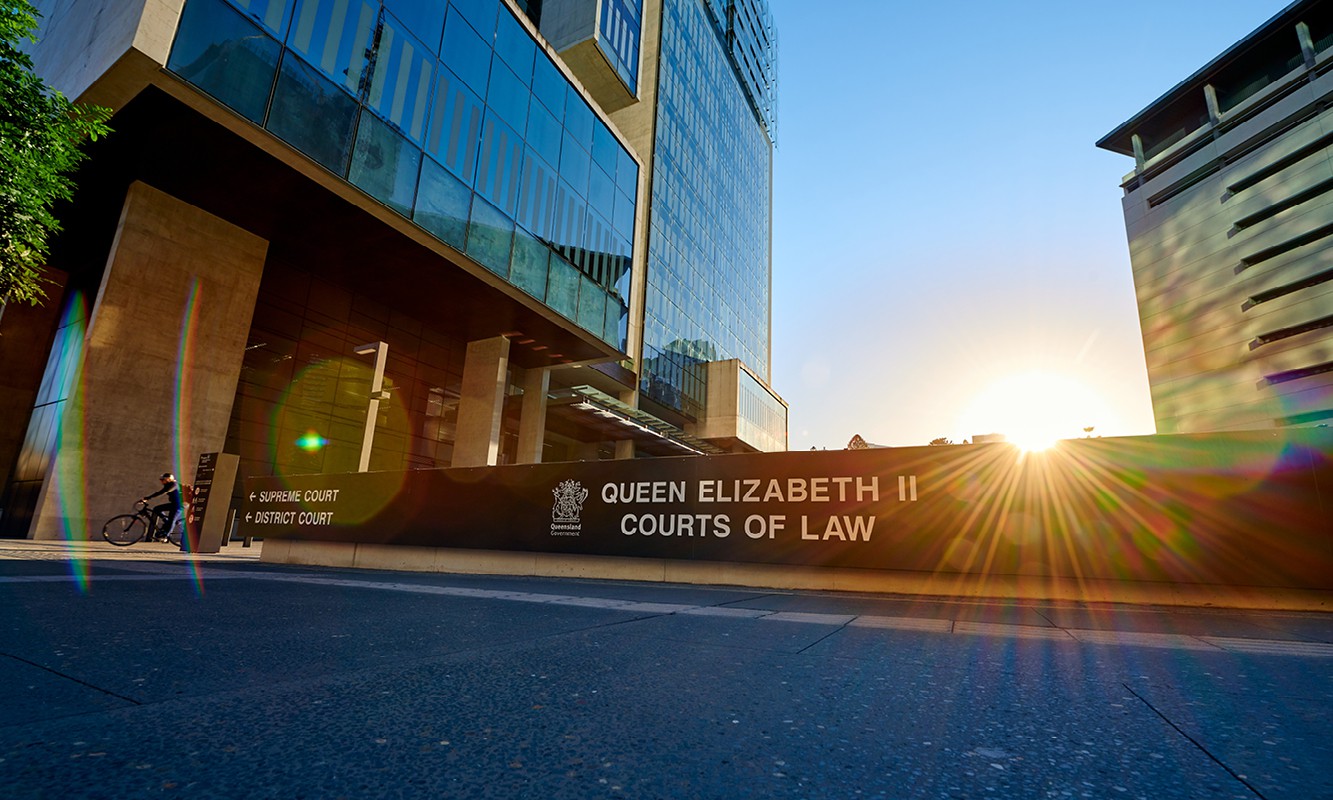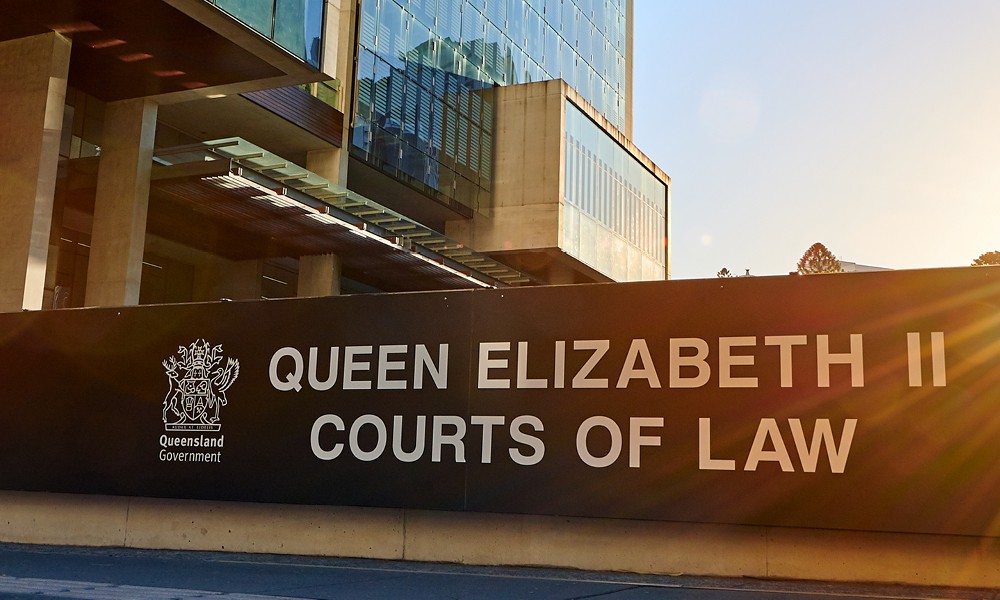Judges of the District Court often hear and determine ex parte applications, including for substituted service, default judgment and for leave to issue an enforcement warrant.
Not infrequently, these types of applications are not supported by admissible evidence. Also, substituted service applications are not infrequently made in circumstances where it is not impracticable (even if inconvenient or expensive) to serve the defendant personally.
Finally, in some cases an application for substituted service is made simply because the defendant cannot be found, but the court cannot be satisfied that the proposed methods of service are likely in fact to bring the documents to the respondent’s attention.
An application that is not supported by complete or admissible evidence addressing all the requirements for the relevant order is likely to be dismissed, although sometimes a judge will give the applicant an opportunity to correct the problems by adjourning the application. In either case, though, the result of the deficient evidence will be delay and an increase in costs.
In supporting affidavits, the applicant seeks to prove to prove facts. Ordinarily, facts can only be proved by someone with direct knowledge of those facts. But, in an interlocutory hearing, a fact can also be proved by hearsay evidence: that is, evidence of something told to the deponent by somebody else. This is where, unfortunately, many affidavits fail to use admissible evidence.
The use of hearsay evidence
The starting point for what hearsay evidence may be used is Uniform Civil Procedure Rules 1999 (UCPR) rule 430, particularly subrule (2).
That rule provides:
“430 Contents of affidavit
(1) Except if these rules provide otherwise, an affidavit must be confined to the evidence the person making it could give if giving evidence orally.
(2) However, an affidavit for use in an application because of default or otherwise for relief, other than final relief, may contain statements based on information and belief if the person making it states the sources of the information and the grounds for the belief.”
Although the rule only clearly states two requirements that must be met to enable evidence given on information and belief, in fact there are three:
- The source of the information must be identified by the deponent of the affidavit.
- The deponent must state her or his belief in the information provided.
- The source of the information must be someone or something that could give or comprise admissible evidence of the fact asserted (by hearsay) in the affidavit.
Unfortunately, the third of these is probably most often not fulfilled.
First-hand hearsay only
The general rule is that affidavits must contain evidence that would be admissible if given orally. To be admissible, it must be about facts personally known to the deponent, relevant to the issues, not include inadmissible hearsay and be limited to matters of fact, unless the deponent is qualified to give relevant expert opinion evidence. The effect of this requirement is that only first-hand hearsay is admissible under sub-rule (2).
This requirement has been clear at least since judgment in 1984 in Savings & Investment Bank Ltd v Gasco Investments (Netherlands) BV.1 Peter Gibson J said, concerning an analogous rule:
“To my mind the purpose of rule 5(2) is to enable a deponent to put before the court in interlocutory proceedings, frequently in circumstances of great urgency, facts which he is not able of his own knowledge to prove but which, the deponent is informed and believes, can be proved by means which the deponent identifies by specifying the sources and grounds of his information and belief. What the sub-rule allows the deponent to state that he has obtained from another must, in my judgment, be limited to what is admissible as evidence.”
That is, only first-hand hearsay is admissible.
This requirement is frequently breached in applications for substituted service. Frequently, a deponent gives evidence of attempts at service by exhibiting a report from a firm of process servers. But the report is written by a person (often not personally identified) other than the process server and often sets out what the process server was told by someone else. That is hearsay upon hearsay.
Even worse, in a recent application to enforce a judgment, the deponent swore that she had been told by an unidentified officer of the plaintiff bank (hearsay) that he had received a report (exhibited to the affidavit) from an unidentified person in the bank’s service agency (hearsay 2) that she or he had been told by the unidentified process server (hearsay 3) that he had been told by an unidentified person apparently occupying the premises (hearsay 4) that a named person lived there and paid rent to the owner (the defendant). So, quadruple hearsay and no source properly identified. It was entirely inadmissible, effectively amounting to rumour. No solicitor or firm should attempt to rely on such “evidence”.
Similarly, frequently in an affidavit in support of an application for substituted service, a deponent exhibits a document referred to as a “skip trace” report, purportedly identifying where the defendant can now be found. Those reports are rarely, if ever, admissible.
They are usually compiled by an unidentified person, who refers to enquiries that another person made or documents the person saw that may, if properly identified and exhibited to an affidavit, demonstrate some facts (at least on a first-hand hearsay basis), but no such documents are produced. Judge Porter KC has described the practice of exhibiting such reports in this manner:2
“…it is common to include a ‘skip trace’ report in affidavits in support of substituted service applications as if a skip trace is a document self-evidently admissible for the truth of any statement contained in it. … On the face of [the document before his Honour] it is unclear how it is admissible for the truth of its contents.”
With respect, I agree.
It is important not to rely on a report from a process serving or investigation company, rather than an affidavit by the particular process server or investigator who undertook the work. Nor should a solicitor rely on a skip trace report, but rather source documents for that report (which the person who obtained documents deposes to obtaining from an identified source) or on an affidavit by someone who has checked the facts identified in the report.
The main lesson is to ensure that any hearsay evidence is first hand only.
Source of information
Returning now to the other requirements of rule 420, the first criterion for admissibility is that the source of the information is identified. This requires that the specific source be identified: the person who told the deponent the information or the document relied on for the information. If the source of the information is not sufficiently identified, then the evidence of that information is not admissible. Justice Muir explained:3
“The requirements of subsection (2) are not met by a broad reference to unspecified documents and classes of documents. The object of the requirement to disclose the deponent’s sources is to provide identification of those sources sufficient to enable the party against whom the evidence is adduced to investigate, assess and, where appropriate, challenge the evidence.”
The same applies to human sources of information. A deponent must sufficiently identify who told the deponent the information relied on. The informant’s identity should preferably include her or his name and a description of how the person personally knew the relevant fact. That will assist in showing that source of the information had personal knowledge of the fact.
If the person declined to give his or her name, he or she should at least be identified in a manner that shows that he or she probably had personal knowledge of the relevant fact. For example, a person may have told a process server that the person was a neighbour of the premises of interest to the process server, the person knew the defendant and the defendant lived there. That sufficiently identifies the source of the information and assists the judge in determining its reliability.
Identification of the source (human or documentary) will also enable the court to assess the weight it should give to the evidence.
Belief in hearsay evidence
Finally, the second criterion for admissibility is that the deponent must state that he or she believes the information to be true (which is often not stated) and the grounds for that belief. It is not sufficient to say, for example, “I was informed by Jane Black that the defendant lives next door to her.” The deponent must say, “I was informed by Jane Black and I believe that the defendant lives next door to her.” Yet frequently the underlined words are omitted from affidavits.
It is unnecessary to say “I verily believe”. “I believe” is enough.
Grounds for belief
The rule requires that the deponent also state the grounds for the deponent’s belief. In practice, for more than a century deponents rarely, if ever, separately state any specific grounds for their belief. The Full Court effectively approved this practice in 1983.4 So as long as the deponent identifies the source of the facts deposed to and that the deponent believes the information, that is normally sufficient to state the grounds of the belief.
Duty to the court
Finally, a practitioner has a high duty to the court when making an ex parte application: that of full and frank disclosure. A substituted service application attracts that duty.5 The practitioner should inform the court of all facts known to the practitioner that may affect the court’s decision, including any facts that are unhelpful to the client’s application. But the practitioner must also make proper enquiries: the duty of disclosure applies not only to material facts known to the practitioner but also to any additional facts which the practitioner would have known had such enquiries been made. In other words, if something you learn leads to another relevant factual question, investigate further and inform the court of the outcome of that investigation.
The court, the applicant and the applicant’s lawyers should take care to ensure that the application is conducted fairly to the absent party. That carefulness should extend to ensuring that the evidence relied on is admissible, or at least alerting the court to any deficiencies in the evidence.6
Can and should a court act on inadmissible evidence?
If evidence before the court is inadmissible, the court may have no discretion to act on it, at least in an ex parte hearing.
Judge Porter KC considered this question thoroughly in a paper entitled ‘Evidence on Information and Belief’, which he delivered to the Queensland Magistrates’ State Conference in May 2022 and a copy of which is on the Supreme Court Library’s website. His Honour’s conclusion was that there is no such discretion. But, even if there is such a discretion, it would rarely be appropriate for a court, in an ex parte hearing where the evidence is not challenged, to rely on inadmissible evidence. At the very least, any such ‘evidence’ cannot be considered reliable and given much, if any, weight.7
Other requirements for obtaining substituted service
It is also important to consider the other requirements for obtaining substituted service, which are set out in UCPR, rule 116.
Personal service impracticable
The threshold condition is that personal service be impracticable. Whether that is so will depend on the facts of each case, so reference to other cases is unlikely to help. But it is necessary to demonstrate something more than mere inconvenience.8
In Foxe v Brown,9 Mason J, speaking of “the standard of diligence or effort required of a plaintiff in seeking out a defendant in a case where substituted service is sought”, said:
“That standard, however it is expressed, is one of reasonableness so as to show a practical impossibility of personal service. Furthermore, the question is not whether reasonable effort has been shown by the plaintiff over a particular period but whether at the date on which the application for substituted service is made that plaintiff, using reasonable effort, is unable to serve the defendant personally.”
Thus, it may not be impracticable to serve a defendant merely because the defendant lives or works in a remote location. For example, Judge Porter KC has dismissed the idea that it was impracticable to serve a defendant in Bamaga simply because of its remoteness.10
Nor may it be impracticable to serve a defendant simply because he or she works unusual or varied hours. A process server should be prepared to wait until the defendant arrives at work, or especially at home, if it is known where that location is and that the defendant regularly attends there.
Discretion
Once the threshold of impracticability is demonstrated, the court has a discretion whether to make an order for substituted service. The exercise of that discretion is informed by the purpose of substituted service, which is to bring the proceeding to the attention of the other party. As Judge Porter KC recently said:11
“Substituted service is not a way to meet the formal requirements of service without effecting actual notice of the proceedings. If a party cannot be found, or if no reliable form of communication of the documents to the defendant is established, then the proceedings cannot progress.”
So there must be a high degree of probability, proved on admissible evidence, that the documents will come to the attention of the other party by the method of service proposed. To achieve that is the primary object of substituted service.12
Responsible deponent
Substituted service applications – and indeed all ex parte applications – should not be treated as necessarily simple or rote. There is a tendency in some firms to get paralegals or junior practitioners to undertake the work of collecting the evidence and deposing to it. I suspect that, in many cases, none of that work is supervised, adequately or at all, by a senior practitioner. That is a mistake.
Nor should practitioners simply include the standard first or final paragraph of an affidavit, without considering whether it is really true.13 If the deponent states facts as if they were his or her own knowledge when that is not the case, or if the sources of information are not identified or the information is hearsay on hearsay and inadmissible, that statement is wrong.
Solicitors and their employees should not treat such a paragraph as if it were meaningless, nor allow it to be misleading: it is still a sworn or affirmed statement of facts on which the solicitor and the client ask the court to rely.14
Practitioners should consider carefully who should depose to facts in ex parte applications, particularly applications for substituted service, as well as considering whether the evidence is properly admissible, whether it demonstrates that personal service is impracticable and whether the proposed method of service is highly likely to bring the relevant documents to the personal attention of the defendant or the defendant’s representatives. Careful consideration of those matters is likely to result in a successful application.
Judge Ken Barlow KC is a Judge of the District Court of Queensland. This presentation is an edited version of the session his Honour presented at QLS Symposium 2023.
Footnotes
1 [1984] 1 WLR 271, 282; applied, for example, in Deputy Commissioner of Taxation v Ahern (No.2) [1988] 2 Qd R 158, 163.
2 National Australia Bank Ltd v Garner [2022] QDC 221, [15].
3 Attorney General v Watego [2003] QSC 367, [26].
4 Phillips v Mineral Resources Developments Pty Ltd [1983] 2 Qd R 138, 144-145.
5 Savcor Pty Ltd v Cathodic Protection International APS (2005) 12 VR 639, 648; Hall v Hall [2007] WASC 198, [31]-[34]; both followed by Judge Porter QC in Heritage Bank Ltd v Gleeson [2019] QDC 119, [36].
6 National Australia Bank v Garner [2022] QDC 221, [17].
7 See Zurich Capital & Finance Pty Ltd v Williams [2020] QDC 277, [21]-[23].
8 Permanent Custodians Ltd v Smith [2006] QSC 333.
9 (1984) 58 ALR 542, 547. Emphasis added.
10 Zurich Capital & Finance Pty Ltd v Williams [2020] QDC 277. See also, National Australia Bank Ltd v Garner [2022] QDC 221, [19].
11 NAB v Garner, [4].
12 Miscamble v Phillips and Hoeflich (No.2) [1936] St R Qd 272, 274.
13 “All the facts herein deposed to are within my own knowledge save such as are deposed to from information only and my means of knowledge and sources of information appear on the face of this my affidavit.”
14 Perpetual Trustees Victoria Ltd v Hogan [2021] QDC 181, [14].
















One Response
I am not sure whether it is the practice to rely expressly or impliedly in such applications on s 92 of the Evidence Act 1977 (Qld), for business records, or comparable legislation elsewhere, especially if first-hand hearsay is not available or for some reason not cogent. Perhaps not — though I cannot really see why not.